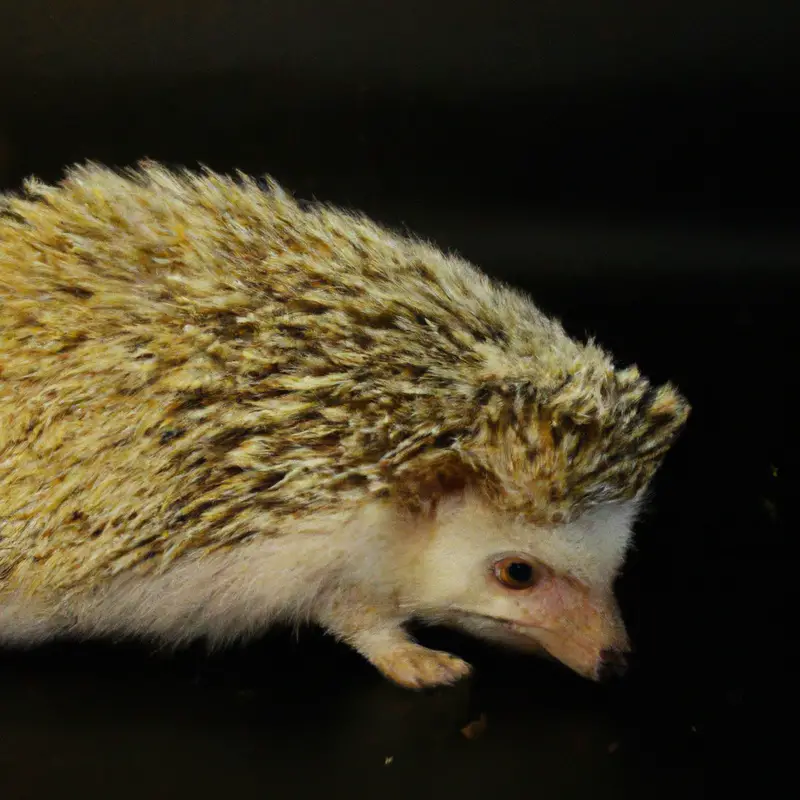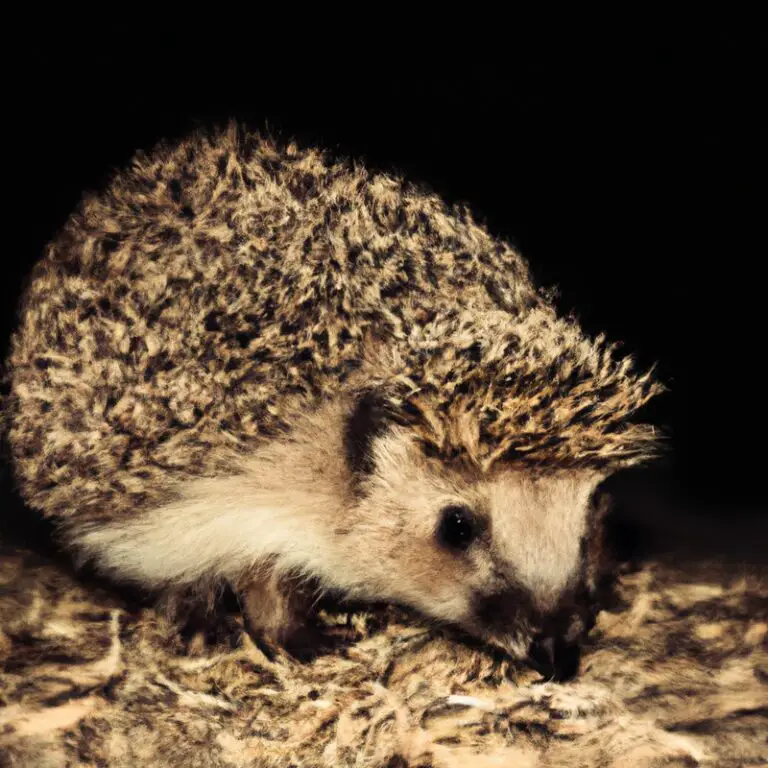How To Promote Hedgehog-Friendly Policies In Urban Planning?
Key Takeaways:
- Incorporate green spaces and wildlife corridors into urban planning to create habitats for hedgehogs.
- Reduce the use of harmful chemicals and pesticides to protect hedgehogs and their food sources.
- Encourage the creation of hedgehog-friendly gardens and provide guidance on suitable features.
- Raise awareness about hedgehog conservation and the importance of their presence in urban environments.
Are you a dedicated urban planner looking to make a positive impact on your city’s wildlife? Wondering how you can create a more hedgehog-friendly environment amidst the concrete jungle?
Well, look no further! In this blog, we will explore the crucial role urban planning plays in hedgehog conservation and discover effective strategies to promote hedgehog-friendly policies in urban areas.
From creating hedgehog habitats to reducing hazards and raising awareness, we’ll dive into practical solutions that will make our cities a safe haven for these adorable spiky creatures. So, let’s get started and transform our concrete landscapes into hedgehog havens!
| Actions | Benefits | Challenges |
|---|---|---|
| Include hedgehog-friendly habitats in urban green spaces | – Provides safe and suitable habitats for hedgehogs – Enhances urban biodiversity – Promotes ecological balance | – Requires additional planning and maintenance – Limited space in urban areas – Potential conflict with other species |
| Minimize or eliminate pesticide use | – Protects hedgehogs from harmful chemicals – Preserves natural food sources for hedgehogs – Supports overall ecosystem health | – Alternative pest control methods may be needed – Increased risk of pest outbreaks |
| Create wildlife corridors | – Facilitates hedgehog movement and connectivity – Allows hedgehogs to access suitable habitats – Reduces isolation and fragmentation of populations | – Requires cooperation from multiple stakeholders – Land acquisition and management costs – May face resistance from property owners |
| Raise public awareness and education | – Encourages public engagement and support – Promotes responsible stewardship – Fosters community involvement | – Time and resources required for educational campaigns – Overcoming misconceptions and resistance – Ensuring long-term sustainability |
Understanding the Importance of Hedgehog-Friendly Policies in Urban Planning
To create a hedgehog-friendly environment in cities, it’s important to understand the significance of implementing policies that support their conservation.
The Decline of Hedgehog Populations in Urban Areas
The decline of hedgehog populations in urban areas is a concerning trend.
Factors such as habitat loss, increased urbanization, and the use of pesticides have contributed to this decline.
Hedgehogs play an important role in ecosystems by controlling pests and helping to maintain a balanced environment.
To address this issue, it is crucial to create hedgehog-friendly habitats in urban planning, including wildlife corridors, green spaces, and reducing pesticide use.
Educating the public about hedgehog conservation is also essential in reversing their decline.
The Role of Urban Planning in Hedgehog Conservation
Urban planning plays a crucial role in hedgehog conservation. It helps create habitats and green spaces for hedgehogs to thrive in urban environments.
Urban planners can incorporate hedgehog-friendly features such as hedgehog highways, wildlife corridors, and green infrastructure in their designs.
They can also implement regulations to protect green spaces and limit the use of pesticides harmful to hedgehogs. By considering hedgehogs in urban planning, we can ensure their survival and maintain biodiversity in our cities.

Benefits of Promoting Hedgehog-Friendly Policies in Urban Areas
Promoting hedgehog-friendly policies in urban areas has several benefits. It helps preserve biodiversity by sustaining hedgehog populations.
Hedgehogs are natural pest controllers, reducing the need for harmful pesticides.
They also act as seed dispersers, aiding in the growth of plants. Additionally, hedgehogs contribute to the overall well-being of urban ecosystems.
Promoting hedgehog-friendly policies can create a more harmonious coexistence between humans and nature in urban environments.
Creating Hedgehog Habitats in Urban Spaces
To create hedgehog habitats in urban spaces, consider incorporating hedgehog-friendly features and vegetation in parks, gardens, and other green areas.
Incorporating Green Spaces in Urban Planning
To incorporate green spaces in urban planning, consider the following strategies:
- Allocate land for parks, gardens, and green corridors.
- Integrate green spaces into the design of buildings and infrastructure.
- Plant trees and vegetation along sidewalks and streets.
- Create rooftop gardens and vertical greenery.
- Prioritize biodiversity by including native plants and habitats.
- Provide access to green spaces for all residents.
- Implement sustainable practices in park maintenance.
- Collaborate with community organizations and local residents for input and involvement.
By prioritizing and implementing these strategies, urban planners can create healthier, more sustainable, and enjoyable cities for everyone.
Designing Hedgehog-Friendly Gardens and Parks
To create hedgehog-friendly gardens and parks, there are a few simple steps you can take. Firstly, ensure there are plenty of hiding places, such as piles of logs or dense shrubs.
Secondly, provide access points, like small holes in fences, so hedgehogs can move freely.
Thirdly, avoid using pesticides and chemicals, as these can be harmful to hedgehogs. Finally, leave out food and water, like dry cat food and a shallow dish, to attract and nourish these adorable creatures.
Remember, creating a welcoming habitat for hedgehogs is not only beneficial for them but also for our urban ecosystems.

Implementing Sustainable Drainage Systems (SuDS) for Hedgehog Survival
Implementing Sustainable Drainage Systems (SuDS) is a great way to support hedgehog survival in urban areas. By incorporating features such as permeable paving and green roofs, SuDS help reduce surface water runoff and provide habitats for hedgehogs.
Avoiding the use of chemicals, like pesticides, is also crucial in promoting hedgehog-friendly environments.
Remember, simple changes in urban planning, like SuDS, can make a big difference in protecting hedgehog populations.
Reducing Hazards for Hedgehogs in Urban Environments
To reduce hazards for hedgehogs in urban environments, it is important to manage traffic and road networks effectively.
Managing Traffic and Road Networks
Managing traffic and road networks is essential for creating hedgehog-friendly urban environments.
Here are some key steps you can take:
- Reduce speed limits: Lowering speed limits can help prevent road accidents involving hedgehogs.
- Install wildlife crossings: Incorporate wildlife crossings, such as underpasses or green bridges, to allow hedgehogs to safely navigate across busy roads.
- Implement road signs: Place warning signs to alert drivers about potential hedgehog crossings and encourage them to drive cautiously.
- Create green spaces: Design road verges and medians with native plants, providing important habitat and foraging areas for hedgehogs.
- Monitor roadkill hotspots: Identify areas where hedgehog roadkill is most common and take targeted measures to reduce these risks.
By considering these measures, we can ensure that traffic and road networks are managed in a way that prioritizes the safety and wellbeing of hedgehogs.
Minimizing the Use of Pesticides and Chemicals
One way to promote hedgehog-friendly policies in urban planning is by minimizing the use of pesticides and chemicals. These substances can be harmful to hedgehogs and other wildlife, as well as the environment.
Instead, consider using natural alternatives or integrated pest management techniques.
Additionally, encourage education and awareness about the negative impacts of pesticides and chemicals. Taking these steps can help create a safer and healthier environment for hedgehogs in urban areas.
Reducing Artificial Light Pollution
Artificial light pollution can have negative impacts on wildlife, including hedgehogs. To reduce this, use low-intensity lighting and direct it downwards instead of upwards.
Shielding outdoor lights can also help minimize the light’s spread.
Additionally, consider using motion-sensor lights or timers to avoid unnecessary lighting during the night. By being mindful of light pollution, we can create a safer environment for hedgehogs and other nocturnal creatures.
Raising Awareness and Education
To promote hedgehog-friendly policies in urban planning, it’s crucial to raise awareness and educate the community about hedgehog conservation.
Educating Urban Planners and Architects
To effectively promote hedgehog-friendly policies in urban planning, it is important to educate urban planners and architects about the needs and importance of hedgehogs in urban environments. By increasing their understanding of the habitats and behavior of these animals, planners can incorporate features such as green spaces, connectivity, and wildlife-friendly designs into their projects.
Workshops, seminars, and educational resources can be used to provide them with the knowledge and tools to create hedgehog-friendly communities.
Additionally, collaboration with conservation organizations and experts can further enhance their understanding and guide their decision-making processes.
Engaging the Community in Hedgehog Conservation Initiatives
Engaging the community is essential for successful hedgehog conservation initiatives. One way to do this is by organizing workshops or training sessions that educate people on the importance of hedgehogs and how they can contribute to their conservation.
Creating educational materials and distributing them through community centers, schools, and online platforms is another effective approach.
Furthermore, encouraging community involvement through citizen science projects or volunteering opportunities can help individuals feel part of the conservation efforts. A strong sense of community engagement can make a significant difference in protecting hedgehogs and their habitats.
Collaborating with Schools and Educational Institutions
Collaborating with schools and educational institutions is essential in promoting hedgehog-friendly policies in urban planning. By partnering with these institutions, we can raise awareness among students and educate them about the importance of hedgehog conservation.
Here’s how you can effectively collaborate:
- Develop educational programs: Work with schools to create educational programs that teach students about hedgehog habitats, behaviors, and the challenges they face in urban environments.
- Conduct workshops and presentations: Organize workshops or presentations in schools to engage students in hands-on activities related to hedgehog conservation. This could include building hedgehog shelters or creating wildlife-friendly gardens.
- Invite experts: Invite experts, such as wildlife biologists or conservationists, to conduct interactive sessions with students. This allows students to learn from professionals and ask questions about hedgehog conservation.
- Incorporate hedgehog topics in the curriculum: Collaborate with educational institutions to include hedgehog-related topics in their curriculum. This ensures that hedgehog conservation becomes a part of the students’ overall education.
- Create partnerships: Form partnerships with educational institutions to establish long-term collaborations. This could involve conducting joint research projects, organizing community events, or working together on conservation initiatives.
Remember, collaborating with schools and educational institutions is a powerful way to engage the younger generation in hedgehog conservation. By empowering students with knowledge and inspiring them to take action, we can make a significant impact on creating hedgehog-friendly policies in urban planning.
Collaborating with Conservation Organizations and Experts
Partner with wildlife conservation groups and experts to promote hedgehog-friendly policies.
Partnerships with Wildlife Conservation Groups
Partnerships with wildlife conservation groups play a vital role in promoting hedgehog-friendly policies in urban planning. They bring together experts who possess in-depth knowledge about hedgehogs and their habitat requirements.
Through collaborations, these groups can provide valuable insights and guidance to urban planners, helping them create spaces that are conducive to hedgehog survival.
By working together, we can ensure that our cities and towns are developed in a way that considers the needs of these adorable creatures.
Working with Ecologists and Biologists
To effectively promote hedgehog-friendly policies in urban planning, it is important to work closely with ecologists and biologists. Here’s how you can collaborate with these experts:
- Seek their advice: Consult with ecologists and biologists to better understand the needs and habitats of hedgehogs. Their expertise will help you identify suitable areas for hedgehog-friendly spaces.
- Conduct surveys: Request their assistance in conducting surveys to assess the hedgehog population in your area. This data will help inform your urban planning decisions.
- Involve them in design phase: Collaborate with ecologists and biologists during the design phase of urban projects to incorporate features that support hedgehogs, such as green corridors, wildlife-friendly landscaping, and hedgehog highways.
- Monitor and evaluate: Engage ecologists and biologists to monitor the effectiveness of implemented policies and initiatives. Their ongoing input will ensure continuous improvement in protecting hedgehogs in urban areas.
By working closely with these experts, you can ensure that your urban planning efforts align with the needs of hedgehogs and contribute to their conservation.
Ongoing Research and Monitoring Efforts
Ongoing research and monitoring efforts play a vital role in understanding and protecting hedgehog populations in urban areas. Scientists and conservation organizations are conducting studies to gather data on hedgehog behavior, habitat preferences, and population trends.
Monitoring efforts involve techniques such as tracking, camera traps, and genetic analysis.
By consistently monitoring hedgehog populations, experts can identify threats, assess the effectiveness of conservation measures, and make informed decisions to promote hedgehog-friendly policies in urban planning. Ongoing research and monitoring enable us to better understand these charismatic creatures and take proactive steps to ensure their survival.
Government Policies and Incentives
Government Policies and Incentives play a vital role in promoting hedgehog-friendly urban planning.
Advocating for Hedgehog-Friendly Policies
To advocate for hedgehog-friendly policies, it’s important to raise awareness about the plight of these adorable creatures. Share educational material on social media platforms, organize community events, and collaborate with local wildlife organizations.
Encourage the implementation of wildlife-friendly practices, such as creating hedgehog-friendly habitats, preserving green spaces, and avoiding the use of harmful pesticides.
Support initiatives that promote the inclusion of hedgehog conservation in urban planning strategies. Lobby for legislation that protects hedgehogs and their habitats.
Together, we can make a difference!
Financial Incentives for Implementing Hedgehog Conservation Measures
One way to promote hedgehog-friendly policies in urban planning is by offering financial incentives for implementing hedgehog conservation measures.
This can include grants or tax breaks for individuals or businesses that create and maintain hedgehog-friendly habitats, such as leaving areas of land undeveloped, providing access points for hedgehogs to move between green spaces, and using hedgehog-friendly fencing.
Governments can also offer funding for research and educational programs to increase awareness about the importance of hedgehog conservation.
By providing financial incentives, it encourages more people to take positive actions to protect these adorable creatures.
Establishing Legal Protection for Hedgehogs in Urban Areas
One way to promote hedgehog-friendly policies in urban planning is by establishing legal protection for hedgehogs in urban areas. This can be done by enacting legislation that prohibits the harming, capturing, or killing of hedgehogs within city limits.
Additionally, laws can be put in place to protect and preserve hedgehog habitats, such as green spaces and gardens.
By legally safeguarding these animals and their environments, we can ensure their survival and create a more hedgehog-friendly urban landscape.
Frequently Asked Questions (FAQs)
Can hedgehogs adapt to urban environments?
Hedgehogs can adapt to urban environments to some extent. They have been observed in cities and suburbs, finding food sources such as insects, snails, and plants.
However, urban areas may pose challenges for hedgehogs, including habitat loss and increased risks from traffic and pollution.
To help hedgehogs thrive in urban settings, it is important to provide green spaces, avoid the use of pesticides, and create wildlife-friendly gardens. By taking these measures, we can support hedgehog populations in urban planning.
What are the main threats to hedgehog populations in urban areas?
One of the main threats to hedgehog populations in urban areas is habitat loss. As cities expand and natural areas are replaced with buildings and roads, the hedgehogs lose their homes and sources of food.
Another threat is the use of pesticides in gardens, which can poison the hedgehogs and reduce their prey.
Traffic is also a significant threat, as hedgehogs often get hit by cars when crossing roads at night. Finally, the lack of suitable hibernation sites in urban areas can make it difficult for hedgehogs to survive the colder months.
How can individuals contribute to hedgehog conservation in urban planning?
Individuals can contribute to hedgehog conservation in urban planning by:
- Creating hedgehog-friendly gardens by providing food, water, and shelter.
- Avoiding the use of pesticides and chemicals that could harm hedgehogs.
- Creating hedgehog highways by ensuring there are small holes or gaps in fences and walls.
- Spreading awareness about the importance of hedgehog conservation to friends, neighbors, and local community groups.
- Supporting local organizations or initiatives that work towards hedgehog protection and conservation.
- Participating in citizen science programs to monitor hedgehog populations and habitats.
- Encouraging local authorities and urban planners to consider hedgehog-friendly design elements in new construction projects.
Are there any success stories of hedgehog-friendly urban planning policies?
Yes, there have been success stories of hedgehog-friendly urban planning policies. For example, in the city of London, efforts have been made to create “hedgehog highways” by connecting green spaces and removing barriers such as fences and walls.
This allows hedgehogs to move freely and access food and shelter.
In Bristol, the “Wild City” project has implemented wildlife corridors and improved green spaces to encourage hedgehogs and other wildlife to thrive. These initiatives show that with thoughtful planning and community involvement, hedgehogs can coexist with urban environments.
Final Verdict
Promoting hedgehog-friendly policies in urban planning is crucial for the conservation and survival of hedgehog populations in urban areas. By creating hedgehog habitats, reducing hazards, raising awareness and education, collaborating with conservation organizations and experts, implementing government policies and incentives, we can ensure a brighter future for these iconic and beloved creatures.
Every individual can play a role in hedgehog conservation by making small changes in their own gardens and communities.
Together, we can create a harmonious urban environment that supports the coexistence of humans and hedgehogs.







